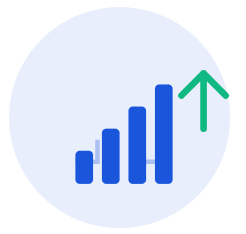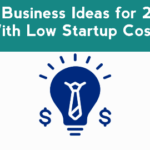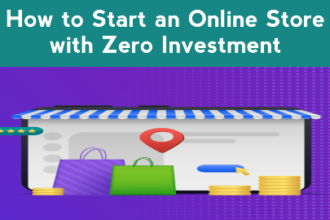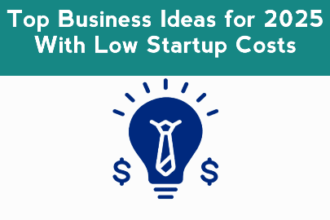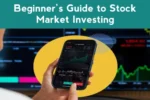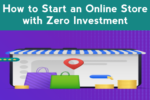Introduction: Your Digital Empire Awaits (And It Costs Less Than You Think)
The dream of starting your own business is more accessible than ever in 2025. You no longer need a physical storefront or a massive loan to launch. The internet has democratized entrepreneurship, allowing you to turn skills, knowledge, and passion into a viable income stream with remarkably low upfront investment.
The key is not capital; it’s strategy, consistency, and leveraging the right tools. This guide provides a modern, step-by-step framework to build your online business from the ground up.
The 2025 Launch Plan: A 6-Step Framework
Step 1: Choose Your Lean Business Model
Forget expensive inventory and overhead. Your best bets in 2025 are asset-light, digital-first models.
- Service-Based Freelancing: Offer your skills directly. This includes copywriting, graphic design, SEO consulting, or virtual assistance. You’re selling your time and expertise.
- Platforms to Start: Upwork, Fiverr, or directly via LinkedIn.
- Digital Product Creation: Build it once, sell it forever. Create e-books, online courses, Notion templates, or stock photography. This is the ultimate path to passive income.
- Platforms to Start: Gumroad, Teachable, or Etsy (for printables).
- Dropshipping or Print-on-Demand: Be the middleman without touching the product. You manage the store and marketing, while a supplier handles inventory and shipping.
- Platforms to Start: Shopify (for your store) paired with Spocket or Printful.
- Content & Community Building: Build an audience around a niche (e.g., personal finance, sustainable living) and monetize through ads, affiliate marketing, and sponsorships.
- Platforms to Start: A blog (WordPress), a YouTube channel, or a TikTok account.
Step 2: Validate Your Idea (Before You Build It)
Don’t waste time building something nobody wants. Validate demand first.
- The “Pre-Sell” Test: Create a simple landing page describing your product or service and see if people will sign up for a waitlist or a discovery call. Use a simple tool like Carrd or Canva to build the page.
- Talk to Your Audience: Find online communities (Reddit, Facebook Groups) where your potential customers hang out. Ask questions, understand their pain points, and see if your idea solves a real problem.
- Analyze the Competition: If others are successfully doing it, that’s a good sign—it means a market exists. Your job is to find your unique angle (better quality, a specific niche, a more engaging personality).
Step 3: Establish Your Digital Storefront
Your online presence is your new business card, store, and marketing hub combined.
- Secure Your Name: Buy a domain name (yourbusinessname.com) from Namecheap or GoDaddy.
- Build Your Home Base: You don’t need a complex website to start.
- For Services: A one-page portfolio on Carrd or a polished LinkedIn profile is enough.
- For Products/Dropshipping: A simple Shopify store.
- For Content/Blogging: A WordPress site with a simple theme.
- Set Up Payment Processing: Use Razorpay or PayPal to accept payments easily and securely.
Step 4: Master Low-Cost Customer Acquisition
You can’t just build it and expect them to come. You have to go out and get your first customers.
- Leverage Social Media (The Right Way): Don’t be on every platform. Pick ONE where your ideal customer lives.
- Visual Products? Use Instagram and Pinterest.
- B2B Services? Use LinkedIn.
- Entertaining/Personality-Driven? Use TikTok or YouTube.
- Tool: Use Canva to create professional-looking graphics for free.
- Create Foundational Content: Start a blog or a YouTube channel answering the most common questions in your niche. This builds authority and attracts organic traffic from Google search (SEO).
- Network Digitally: Engage in online forums and communities. Provide value first without pitching. People buy from those they know, like, and trust.
Step 5: Systemize and Automate for Scale
Manual work doesn’t scale. As you get your first sales, focus on efficiency.
- Automate Communication: Use templates for common emails. A free plan on Mailchimp can automate welcome emails.
- Streamline Scheduling: Use Calendly to let clients book calls without back-and-forth emails.
- Manage Social Media Efficiently: Use the free plan of Buffer to schedule a week’s worth of social posts in one sitting.
Step 6: Delegate to Grow
Your time is your most valuable asset. Once you have consistent revenue, reinvest it by hiring help for tasks that drain your time.
- Start with Freelancers: Hire a virtual assistant for administrative tasks, a graphic designer for ad creatives, or a writer for your blog from platforms like Fiverr or Upwork. This frees you up to focus on high-value work like strategy and sales.
The Mindset for 2025 Success
- Embrace the “Minimum Viable Product” (MVP): Launch before you feel 100% ready. Get a simple version of your product or service to market and improve it based on real customer feedback.
- Focus on a Niche: “Everyone” is not a target market. “Busy female entrepreneurs who need help with their Instagram marketing” is. A tight niche makes marketing easier and more effective.
- Consistency Over Perfection: Showing up regularly with valuable content or outreach is far more powerful than occasional moments of perfection.
Conclusion: Your Journey Starts Now
Building an online business in 2025 is a marathon, not a sprint. It requires patience, resilience, and a willingness to learn in public. The tools and platforms have never been more powerful or affordable. The biggest barrier is no longer money—it’s taking the first step.
Your launch assignment is simple: Complete Step 1 and Step 2 this week. Choose your model and validate it with 5 people in an online community.
What’s the one idea you’re most excited to validate? Share it in the comments for feedback and to hold yourself accountable!
